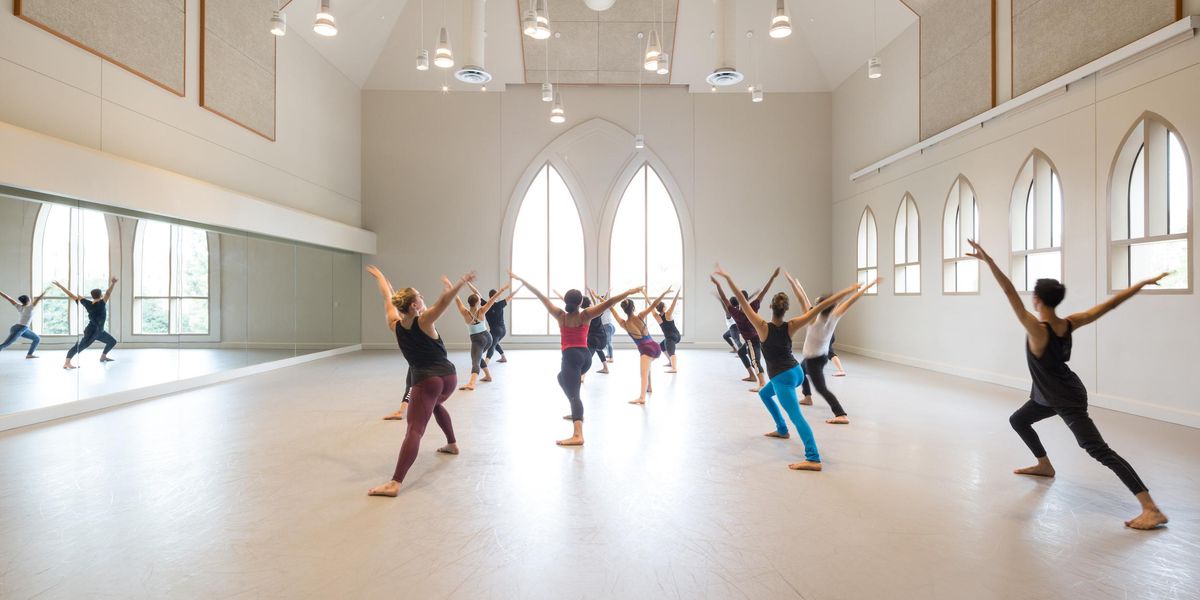Paris Opera Ballet and Pina Bausch
I got out of the metro and turned around and was stunned by the sumptuous facade of the Palais Garnier—actually only half of it, since the other half was under construction. I felt like I was in another century. The halls inside are wine red, and the orchestra seats are red velvet armchairs that must be a hundred years old. Every inch of wall space is taken up with ornate, gold-plated figures of cherubs and nymphs. I was surprised to look up and see, on the circular ceiling, paintings by Chagall. Hey, he’s our guy, I thought; his paintings are up at the Metropolitan Opera House. (I have a special feeling for Chagall because he is from Vitebsk, the same town my grandmother was from, and I’ve actually visited the tiny house where he grew up.) Other than that, though, the Palais Garnier is completely different from Lincoln Center. You feel drenched in history—which can either make you feel warm and connected or overfed and cluttered. (It made me appreciate NY State Theater—so simple and spacious and well lit.)
The set was huge and stark, like maybe a Robert Wilson set, with granite-like walls and other vertical surfaces that created dark shimmering reflections (sets and costumes by Rolf Borzik). An uprooted tree lay horizontally across half the space. What gave it a personal touch was that every once in a while a dancer or singer would wander over to the granite wall and tip their head into the wall as though someone had said, “Go stand in the corner.”
The highpoint, unsurprisingly, was when Orpheus gives in to temptation and turns his head back to look at her. Of course she dies, but what’s great is that her singing double dies too and falls on top of her. And then his singing double falls on top of them. So for the first time, he is split from his alter ego, or voice, or spirit. They form a nice little pile stage left while he is lying still upstage right.
Marie-Agnès Gillot was fine as Eurydice in a red dress, but even better, juicier, fresher, was Miteki Kudo as Love. Dressed in white, she was like a spring breeze onstage. Yann Bridard was a vulnerable Orpheus.
The chorus of women wore long black gowns making them look at first like a movement choir out of Mary Wigman. But the fabric is actually transparent and you can see their exquisite bodies underneath—a delightful Bauschian touch.
As they bowed, and La Bausch came out and took her characteristically apologetic bow, the audience went into that European thing of clapping rhythmically to show appreciation.
The next morning, I was lucky to get a personal tour from a member of POB’s press crew of the inside of the building. I saw the round studio under the dome that Lisa Kraus taught Trisha Brown’s Glacial Decoy in (see DM April, 2005). I walked on the wonderful wood floors that look like they date back to the original building in 1875. I saw the huge stage with its five stories of fly space. I stepped into the “foyer de la danse,” where wealthy patrons would meet the young dancing girls after a show. It is basically a green room but filled with paintings of Noverre, Taglioni, Grisi, Elssler, and others of that period. (I think I saw a glimpse of that same foyer a week later in the movie The Red Shoes on Turner Classic Movies.) I wonder if the dancers feel intimidated or inspired by the reminders of their deep history on a daily basis— probably combination of both.




